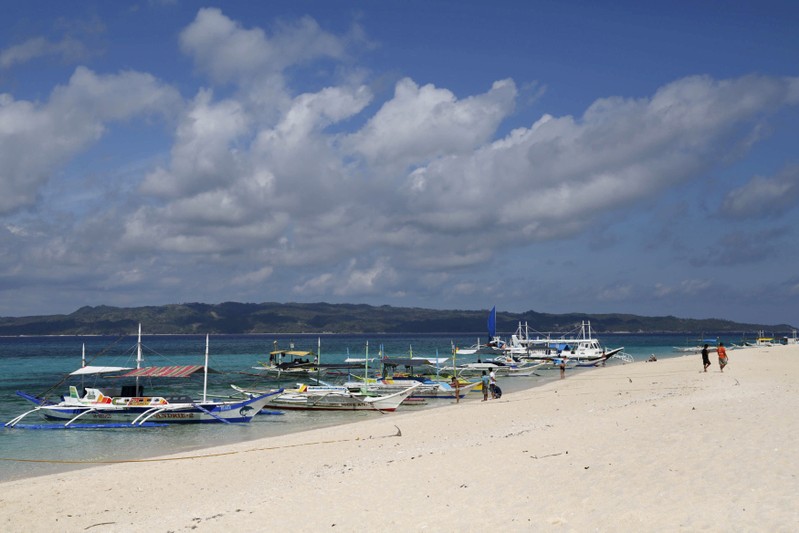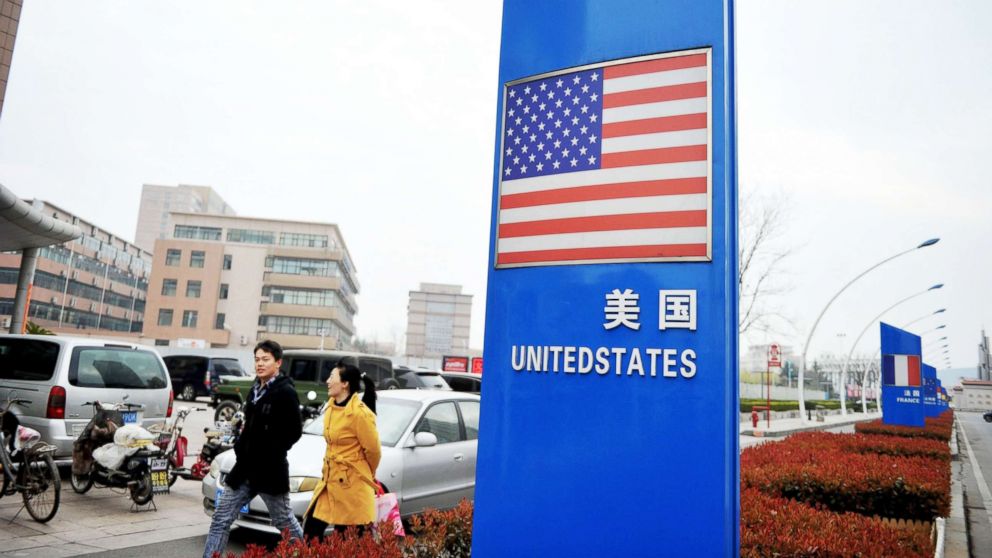
FILE PHOTO: Traditional boats line up the shore in a secluded beach on the island of Boracay, central Philippines January 18, 2016. REUTERS/Charlie Saceda/File Photo
April 5, 2018
By Neil Jerome Morales
MANILA (Reuters) – A decision by Philippine President Rodrigo Duterte to shut the holiday hotspot of Boracay, which he has called a “cesspool”, prompted airlines to cut flights on Thursday, as hotels prepared for cancellations and businesses appeared resigned to a move the government said was non-negotiable.
Duterte late Wednesday ordered the closure of Boracay for six months from April 26 in a bid to rescue from ruin a once idyllic island that drew 2 million tourists and generated over a billion dollars in revenue last year.
Domestic airlines offered customers full refunds or flights elsewhere, but said they would still operate a limited number of flights to Boracay’s gateways, Caticlan and Kalibo, to serve residents, which number about 50,000.
Cebu Pacific, Philippine Airlines [PHL.UL] and AirAsia Philippines said they would scale down services to the two airports from April 26 to Oct. 25, and add more to other popular beach and dive destinations, including Cebu, Palawan and Bohol.
Cebu Pacific, the dominant domestic carrier, said it cancelled 14 daily round-trip flights and anticipated a loss of $3 million to $5 million over the six months. The government this week estimated the closure could shave 0.1 percent off 2018 GDP.
Discovery World Corp, which operates a lavish 88-room resort in Boracay, said the closure would have a significant impact on its financial health, citing the resort’s large contribution to revenue. The company’s shares dropped as much as 7.5 percent on Thursday.
The government made it clear it was ready to take a temporary hit on tourism.
“We have to swallow the bitter pill if we wish to sustain and protect the island of Boracay,” Frederick Alegre, assistant secretary for tourism, told a news conference. “It is a temporary setback but we will recover the glory days of Boracay.”
Located off the northern tip of the central island of Panay, Boracay’s white sand, lively nightlife and abundant water sports are a constant draw for visitors. In recent years, growing numbers of Asian visitors, particularly from China, have been straining the resources of beach resorts in countries like Philippines and Thailand.
CATALOGUE OF BREACHES
Since February, Philippine officials have been scrambling to inspect the island and record a catalogue of construction and permit breaches after Duterte, in one of his trademark public outbursts, said Boracay’s turquoise waters smelled “of shit” because sewage was ending up in the sea.
He has vented fury at an explosion of unlicensed developments on the crowded 10-square-kilometre (4-sq-mile) island, including encroachments on forest and beach land. So far, the authorities have found 948 illegal structures, half of which they aim to destroy during the closure.
The government has yet to provide specifics about the rehabilitation, but Epimaco Densing, assistant secretary of the interior, on Thursday said a soft opening could take place within 3-4 months, after drainage systems were fixed and illegal structures dismantled.
Priorities, officials said, were overhauls to roads, sewage treatment and waste disposal facilities to handle about 90 to 115 tons of waste a day, of which only 30 tons is brought out off the island, according to the interior ministry.
The local tourism industry has urged a delay to the planned closure and a gradual introduction, something the authorities say cannot work.
Boracay Foundation Inc, the largest business group on the island, was meeting on Thursday to discuss its response to the closure.
Jose Clemente, president of the Tourism Congress of the Philippines, said businesses needed time to adjust.
“We are a bit depressed right now,” he said. “I really feel for the people in Boracay,” he added. “They really need to find ways to be employed, or at least keep their head above water for the next six months.”
The government said it will have a 2 billion peso ($38.4 million) “calamity fund” to try to help an estimated 30,000 people on Boracay whose livelihoods depend on tourism, directly and indirectly.
The impact on hotels and resorts has yet to be fully assessed. Boracay, one of 7,300 islands in the archipelago nation, hosts 1,800 businesses, including global hotel chains like Shangri-La and Movenpick, and locally listed companies Megaworld Corp and Manila Water.
Karl Chusuey, vice president for marketing at Henann Group, which operates one of Boracay’s largest resorts, said it was receiving cancellations, which “were as expected”. A representative of Shangri-La said it would issue a statement later, while a source at the Savoy Hotel said it was receiving a lot of re-bookings for when the island reopens.
Discovery World said it had started to refund customer deposits, rebooking them to future dates or to its resort on the island of Palawan.
Some large operators welcomed the closure, saying it would create a more sustainable tourism environment, and make it easier to complete ongoing construction work.
“It’s good for us because it means a better Boracay after six months,” said Monica Salomon, president of Global Estate, a subsidiary of Megaworld Corp, which is behind the 140-hectare Boracay Newcoast project.
(Additional reporting by Jamie Freed in SINGAPORE; Writing by Martin Petty; Editing by Philip McClellan)

